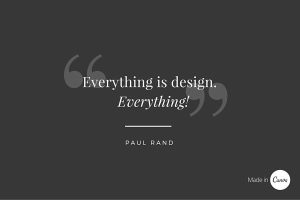
Everyone of us, as children, incessantly asked the question “Why” on hearing any statement. Every fact, every sentence was treated as a hypothesis which required proof and lengthy argumentative discussions. Only when we got the answer to every possible ‘why’ did we calm down. This curiosity, this urge to know the rationale behind every reality is what has driven mankind to innovate endlessly and find answers to the universe’s biggest mysteries. But then, why is it that we stop asking ‘why’ after a certain age? Why do we give up curiosity? Design, more than anything, is hugely dictated by reasoning and exploring possibilities. Why, you ask? Let’s prove it then.

When you are asked to design a structure, whose minimum life is to be 80 years, the pressure is palpable!! In this situation, crunching numbers is only going to ensure structural load and strength of the building. But, to take into account it’s usefulness, functionality, feasibility, sustainability or aesthetics, no calculator will come to your aid. No amount of integration can help you think about the effect of this particular design in the next 80 years. What do you do?
The only way out, is to ask yourself “WHY?” Each and every time. When you consistently look for logic and reasoning at every step and stage of design is when you can come up with a conducive and feasible structure. This applies not just for large scale architectural design, but even for something as simple as a chair. In design and architecture, every single line you draw, every dot you make, every word you write and every detail you come up with, has to hold a meaning. The material you choose, the grooves you make, the services you provide, everything should be logical and there has to be an answer to the question “WHY.”
A building or a structure is designed for not one or two people, but a community and society. Townships, hospitals, hotels, malls even a temporary porta cabin, is designed keeping in mind the millions of people who are going to use it over a period of several years. Moreover, every person is going to use it differently. For instance, a waiter or a cook will have a different purpose for a restaurant than a customer. The restaurant however, is designed equally well for both.

Concerning yourself and subjecting your design to all possible outcomes, situations and consequences can ensure a fool proof design. In order to achieve a splendid design, the designer must always put himself in the client’s shoes. He must think from the client’s perspective. He should analyze the client’s personality, his qualities and traits and know his shortcomings. The client maybe anyone, it may be the designer himself, in a case when he fashions his own logo or his own house. Or it may be a massive client, like a country, in a case when he is required to design a currency note or a flag. Secondly, he must make note of all that the client wants and needs. A designer should then ideate, and come up with varied solutions. Through a process of elimination, he should then be able to identify the best idea amongst several possible outcomes. He should then develop that idea further and test it. This is applicable for all types and streams of design. Advertisements, graphic designs and posters, interiors, fashion, visual and animation as well as architecture.

There can be innumerable permutations and combinations for even a simple 10’x10′ office space layout. There will be several good designs. Then, how do you choose the best one? It is only when you can answer each and every ‘why’, to yourself and your client, correctly, logically and to his satisfaction, that you stand a chance of winning the project.
“Why is the window so big?”
“Why is there a courtyard?”
“Why is this particular color used?”
“Why is this bed oriented like this?”
The answer to any of the above questions cannot be a quizzical look with a shrug of your shoulders. Even if your design is great, but you can’t back it up with sufficient reasons and answer every question thrown at you with a “because” or “due to”, it will fail to impress. Before drawing a single line, ask yourself, “Why am I drawing this?”, “Why this big?”, “Why in this direction?” “Why in this line weight?”
Successfully answering all the Whys and what ifs in your mind will ensure that you have given a long and calculated thought to your design. It will also ensure that when your client or jury ask you a hundred doubts, you are well prepared to tackle them and suggest alterations and improvements.
Reasoning, thus plays a very important role in design. If you really think about it, everything in this universe happens for a reason. No, I’m not talking about fate or destiny. I’m talking about logical thought and rationality. Not only should one choose the design stream based on a fairly solid reason, but they should also be prepared to be unabashedly curious for the rest of their lives.

